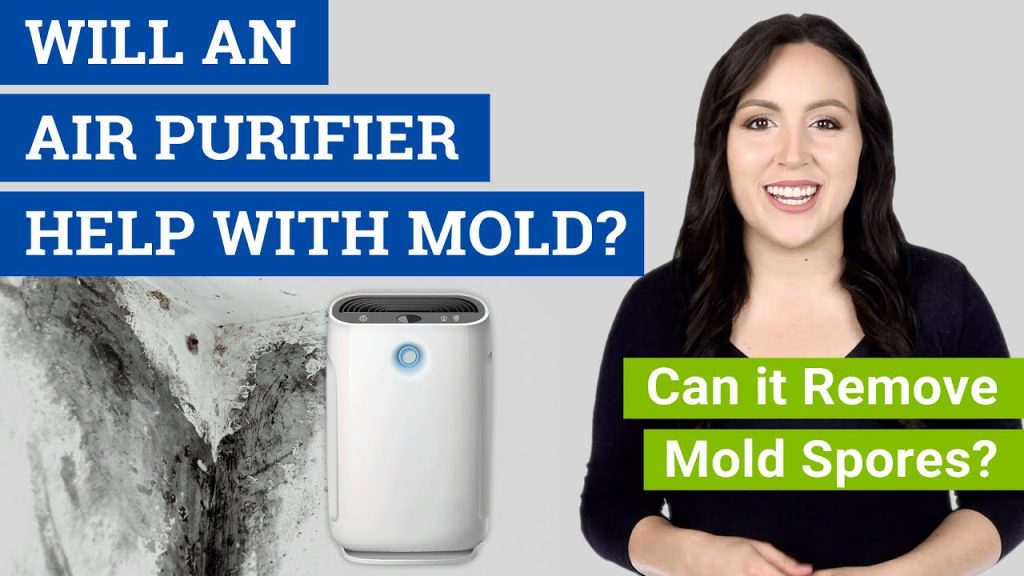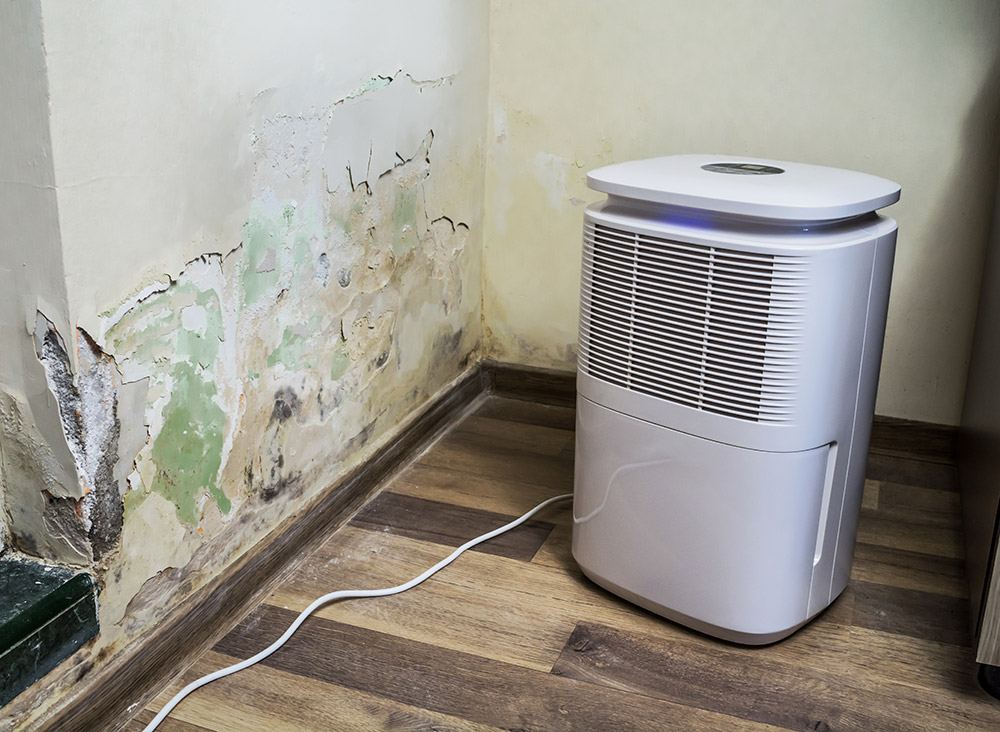This post is for you if you’ve ever questioned if air purifiers can actually remove mold spores from the air. For anyone with allergies or respiratory ailments, mold spores can be a nightmare because they can lead to a variety of health problems. This article (Do Air Purifiers Eliminate Mold Spores From The Air) will examine whether air purifiers are successful in eliminating these bothersome spores, giving you the knowledge you need to make an educated choice about enhancing the quality of your indoor air. So let’s get started and learn how air purifiers can help make your home healthier and cleaner for you and your family.

What are air purifiers?
Definition of air purifiers
The purpose of air purifiers is to improve the quality of the air inside buildings by removing impurities, pollutants, and allergies from the air. To lessen the amount of airborne particles that might lead to respiratory problems and other health issues, they are frequently used in homes, offices, and other indoor spaces. In order to remove pollutants, air purifiers pull in air, filter it, and then release clean air back into the surrounding area.
Types of air purifiers
Today’s market offers a variety of air purifier models, each with a distinctive way of cleaning the air. The most typical varieties include:
- HEPA (high-efficiency particulate air) purifiers: These purifiers use a dense filter to trap particles as small as 0.3 microns, including mold spores. HEPA filters are highly effective in removing allergens and other airborne particles.
- Activated carbon purifiers: These purifiers use activated carbon filters to trap gases, odors, and chemical pollutants in the air. While they may not be as effective at removing mold spores, activated carbon filters can help improve overall air quality.
- Ultraviolet germicidal irradiation (UVGI) purifiers: These purifiers use ultraviolet light to kill or deactivate mold spores and other microorganisms. UVGI purifiers can be effective in reducing the presence of mold spores in the air.
- Ionic purifiers: These purifiers release negative ions into the air, which attach to positively charged particles such as mold spores and cause them to stick to surfaces. While they can help reduce airborne particles, they may not fully eliminate mold spores from the air.
Understanding mold spores
Definition of mold spores
Mold fungi create microscopic reproductive units called spores. They can readily become airborne due to their minuscule size and spread to new locations by doing so. Mold spores may survive in a variety of settings and may lay dormant until the right conditions arise for growth.
Characteristics of mold spores
Mold spores are airborne and lightweight, making them simple to breathe in. When mold colonies are disturbed, such as by air movement or manual manipulation, they are often expelled in enormous amounts. Mold spores may endure harsh environments and can persist for long periods of time.
Health risks associated with mold spores
There are a number of health dangers associated with inhaling mold spores, especially for people who have allergies or respiratory disorders. Sneezing, coughing, and eye discomfort are just a few allergic symptoms that can be brought on by exposure to mold spores. Long-term exposure to high mold spore concentrations can potentially cause more severe health problems such respiratory infections, asthma flare-ups, and fungal lung infections in people with compromised immune systems.
How do air purifiers work?
Filtration process
In order to eliminate pollutants, including mold spores, air purifiers draw air from the environment and pass it through a number of filters. The following steps are commonly included in the filtration process:
- Pre-filter: This initial filter captures large particles such as dust, pet dander, and pollen. It helps extend the lifespan of the main filter and improves the overall effectiveness of the purification process.
- HEPA filter: The main filter used in many air purifiers is the HEPA filter. It is designed to remove particles as small as 0.3 microns, which includes mold spores. HEPA filters are highly efficient in capturing a wide range of airborne particles, making them effective in reducing mold spore concentrations.
- Additional filters: Some air purifiers may also incorporate additional filters, such as activated carbon filters or UVGI filters, to target specific pollutants or microorganisms in the air.
Types of filters used
In order to properly remove impurities from the air, air purifiers frequently use a number of filters. The HEPA filter, which is capable of efficiently collecting particles as fine as 0.3 microns, is the most crucial filter for catching mold spores. Additionally helpful for minimizing smells and volatile organic compounds (VOCs) that could be linked to the formation of mold are activated carbon filters.
Effectiveness of air purifiers in reducing airborne particles
Mold spores can be significantly reduced in the air by using air purifiers, particularly ones with HEPA filters. It is crucial to remember that mold spores may still be present in corners or on surfaces, therefore air purifiers cannot totally remove them from the air. Additionally, elements like the size of the space, the airflow, and the degree of mold contamination will all affect how well an air purifier works to reduce mold spores.
Can air purifiers eliminate mold spores?
Limitations of air purifiers
While air purifiers can aid in lowering the amount of mold spores in the air, they are not completely effective in doing so. Mold spores can stay on surfaces, and unless they are disturbed and become airborne once more, air purifiers may not be able to efficiently capture them. Additionally, if there are obstructions or inadequate airflow, air purifiers might not be able to reach every region of a space.
Partial mold spore removal
Mold spores in the air can be considerably reduced by air purifiers, especially ones with HEPA filters. This can reduce the chance of inhalation and the ensuing health problems. It is crucial to remember that some mold spores may still be present in the air even with a highly effective air filter.
Preventing mold growth
In order to prevent further contamination, it is crucial to address the root cause of mold growth in addition to using air purifiers to minimize the amount of mold spores in the air. This can entail locating and dealing with sources of moisture or humidity, enhancing ventilation, and putting in place suitable cleaning and maintenance procedures.

Factors to consider when choosing an air purifier for mold spores
HEPA filtration
It is essential to purchase an air purifier with a HEPA filter if you want to get rid of mold spores. Mold spores and other airborne particles can be successfully captured using HEPA filters, which offer a high level of filtration and purification.
Additional features for mold spore elimination
Some air cleaners may come with extra capabilities that can assist get rid of mold spores more successfully. These might include UVGI technology for disinfection, antimicrobial filter coatings to prevent mold growth, and activated carbon filters for odor and chemical removal.
Room size and air purifier capacity
Take into account the air purifier’s recommended coverage area as well as the size of the room in which it will be used. It’s critical to pick an air purifier that has the capacity necessary to efficiently filter the air in the specified space. If you select an air purifier that is too tiny for the space, the filtration may not be as effective.
Potential health benefits of using air purifiers for mold spore removal
Reduced allergenic reactions
Air purifiers can aid in the relief of mold allergy symptoms by lowering the amount of mold spores in the air. Sneezing, coughing, watery eyes, and other allergic symptoms may become less frequent as a result.
Improved respiratory health
By removing airborne toxins, air purifiers can also help to improve respiratory health. As it lessens the triggers that can increase their symptoms, this can be especially helpful for people with respiratory diseases like asthma or chronic obstructive pulmonary disease (COPD).
Reduced risk of mold-related illnesses
Air purifiers can lessen the risk of mold-related illnesses by lowering the amount of mold spores in the air. Long-term contact with spores from mold can cause respiratory infections, fungal lung infections, and other severe health problems, especially in people with compromised immune systems.

Maintenance and care of air purifiers for mold spore elimination
Regular filter replacement
Replace the filters in your air purifier on a regular basis to ensure peak performance and successful mold spore removal. The pre-filter and the HEPA filter must normally be changed in accordance with the manufacturer’s instructions. If the filters aren’t changed, the air filtration system may function less effectively and mold spores may reappear.
Cleaning the air purifier
To prevent dust and other debris from accumulating, give the air purifier’s outside surfaces a regular cleaning. Additionally, keep the air purifier’s efficiency and lifespan intact by cleaning the inside according to the manufacturer’s directions.
Monitoring air quality
To routinely evaluate the performance of your air purifier and the quality of the air in your surroundings, think about utilizing an air quality meter. This can assist you in figuring out when it’s required to change the filters or modify the settings in order to achieve the best possible purification.
Other methods for controlling mold spores
Proper ventilation
In order to regulate and stop the growth of mold spores, proper ventilation is essential. By opening windows, utilizing exhaust fans, and keeping excellent air circulation, you can make sure that there is enough ventilation in your house or place of business. This assists in removing surplus moisture and lessens the possibility of mold spores settling and spreading.
Controlling humidity levels
Environments with high relative humidity support the growth of mold. To keep the relative humidity below 50%, use dehumidifiers or air conditioners, especially in spaces that are prone to moisture buildup, such bathrooms, basements, and kitchens. This may aid in preventing the growth of mold and lowering the level of airborne mold spores.
Cleaning and disinfection
Clean and sanitize places prone to mold growth, like restrooms and kitchens, on a regular basis. Use the proper cleaning supplies and methods to get rid of any mold that is visible and stop it from growing further. Regularly vacuum your carpets and upholstery to reduce the buildup of mold spores.

Common misconceptions about air purifiers and mold spores
Complete elimination of mold spores
It is significant to remember that mold spores cannot be entirely removed from the air by air purifiers. While they can greatly lower concentration, it is nearly hard to completely eradicate them because mold spores can settle on surfaces and may be present in unnoticed places.
Replacement for mold remediation
Mold remediation is still required to handle current mold development and stop it from recurring, even when air purifiers are used. If there is visible mold in the area, air purifiers can help to reduce airborne mold spores but they cannot take the place of expert mold cleanup.
Air purifiers and visible mold
Mold that is readily visible cannot be removed by air purifiers. They generally go after spores of mold that are in the air. If you have visible mold, it’s crucial to deal with the root of the problem and seek expert assistance for effective treatment.
Conclusion (Do Air Purifiers Eliminate Mold Spores From The Air)
While improving indoor air quality and lowering the amount of mold spores in the air, air purifiers cannot completely eradicate mold spores. They should be taken into account as a component of an all-encompassing strategy for mold prevention and mitigation, which also involves locating and treating moisture sources, enhancing ventilation, and putting in place suitable cleaning and maintenance procedures. Look for an air purifier with a HEPA filter and take into account any other features that can increase its efficacy when selecting one to remove mold spores. For maximum performance, regular upkeep and filter replacement are necessary. You may make your home healthier for you and your family by using air purifiers in addition to other mold spore control techniques.
Recommendations: H13 True HEPA Filter

